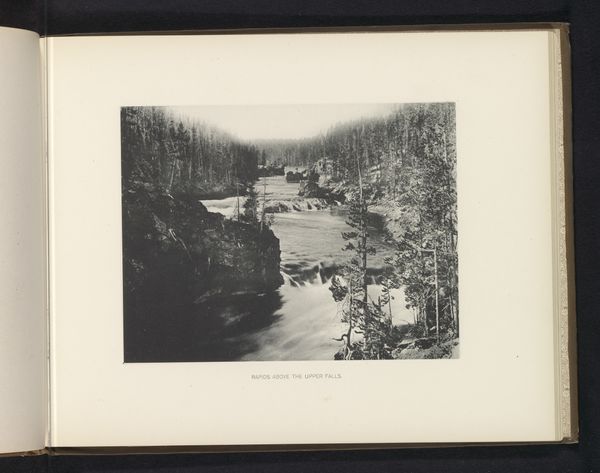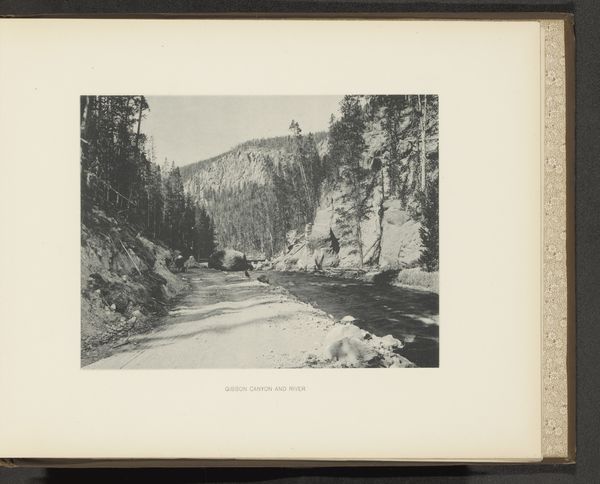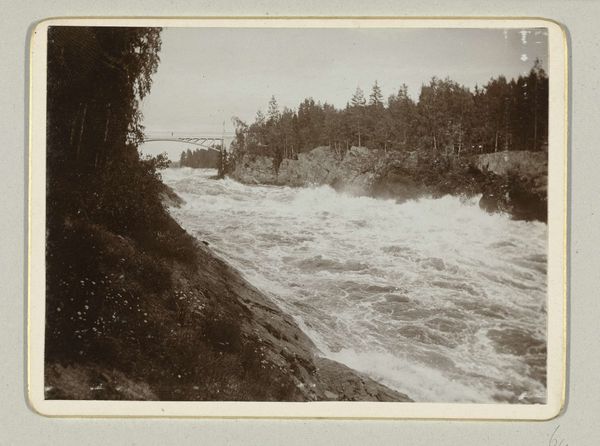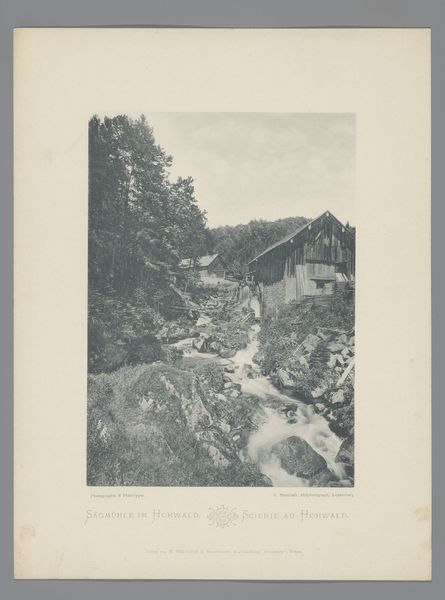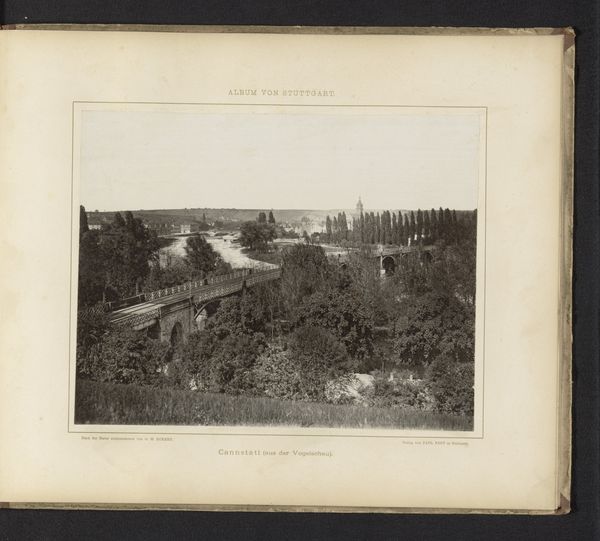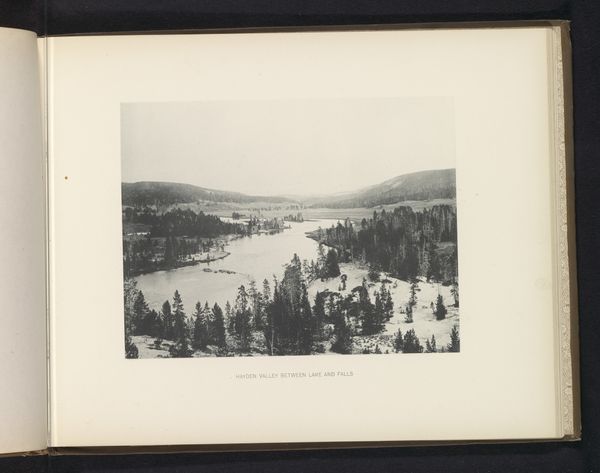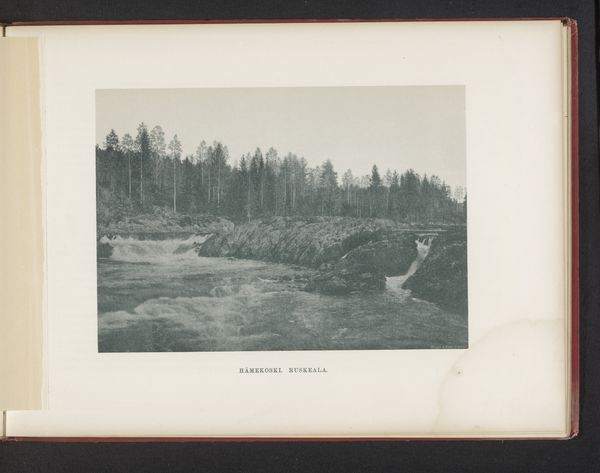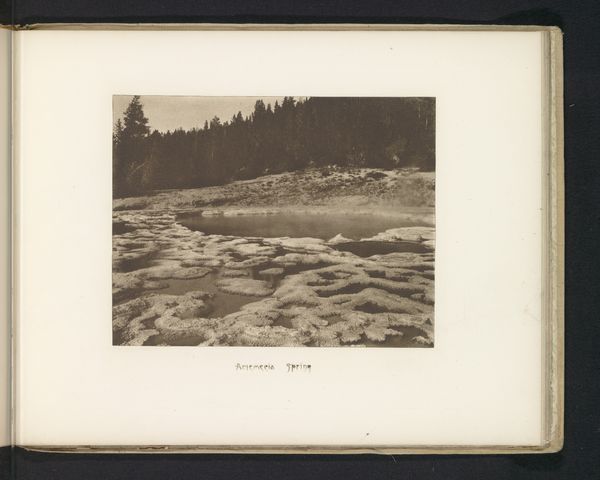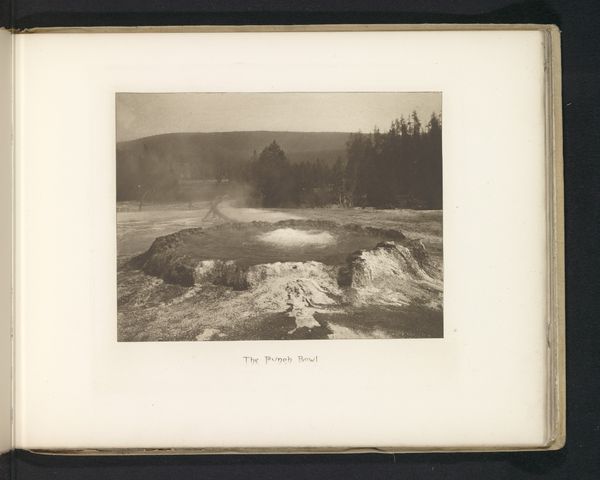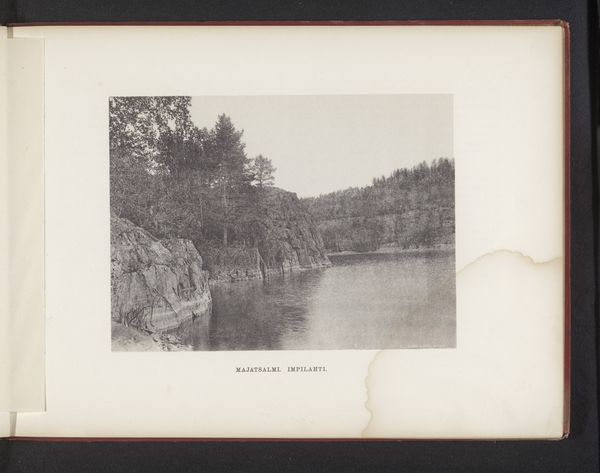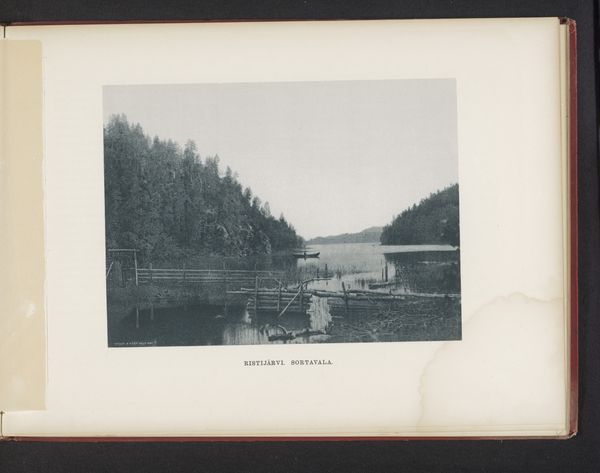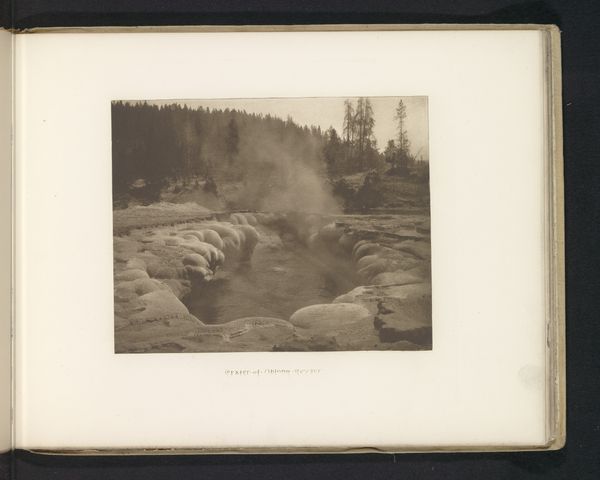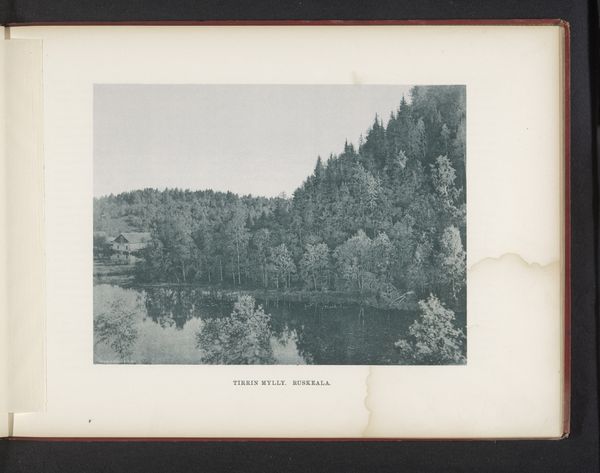
Dimensions: height 163 mm, width 209 mm
Copyright: Rijks Museum: Open Domain
Curator: Looking at "The Rapids above the Upper Falls," a gelatin-silver print from before 1887 by Frank Jay Haynes, one is immediately struck by the raw, almost turbulent energy captured in monochrome. The scene speaks of a power barely contained. Editor: I notice, firstly, the long exposure here, blurring the water’s surface, contrasting the rigid verticality of the surrounding trees. The process becomes very much part of the picture. What statements was Haynes trying to make with this image about man vs nature or industry perhaps? Curator: Haynes was not necessarily making direct statements of that kind. Rather, the Hudson River School influence encouraged artists to capture the sublimity and awe-inspiring nature of the American landscape. This photographic piece serves to emphasize not confrontation but communion. It shows the unyielding power of nature, untouched by man in many ways, the swirling currents becoming metaphors for constant transformation and perhaps spiritual currents. Editor: Interesting to describe it as communion given the heavy manipulation and work involved in the gelatin-silver printing process. Look closely; you can almost see the layering involved to render such details, speaking volumes about the relationship of human labor and image making itself, how this image itself becomes a commodity in this exchange. Curator: You focus on the hand, so to speak, which indeed reminds me of the history being captured. In photographing nature, Haynes also immortalized a vanishing perspective, when this corner of untouched wilderness would not long stay in view as settlements came and reshaped the area and as the history of landscape painting influenced modes of seeing it. It's a captured moment on the cusp of change. Editor: Perhaps there’s some beauty in recognizing both. Haynes' work certainly shows that image-making doesn’t exist separately from its materiality or the moment of its creation. Curator: It reflects what we choose to bring into view – the fleeting spirit of water or a glimpse of the historical changes to come.
Comments
No comments
Be the first to comment and join the conversation on the ultimate creative platform.
